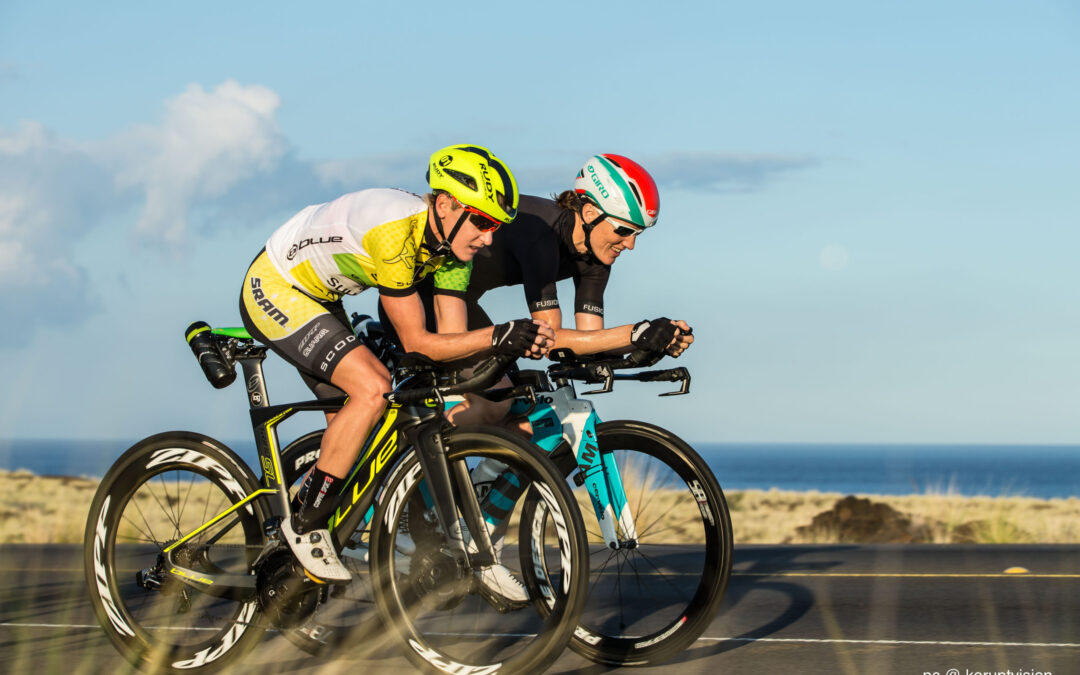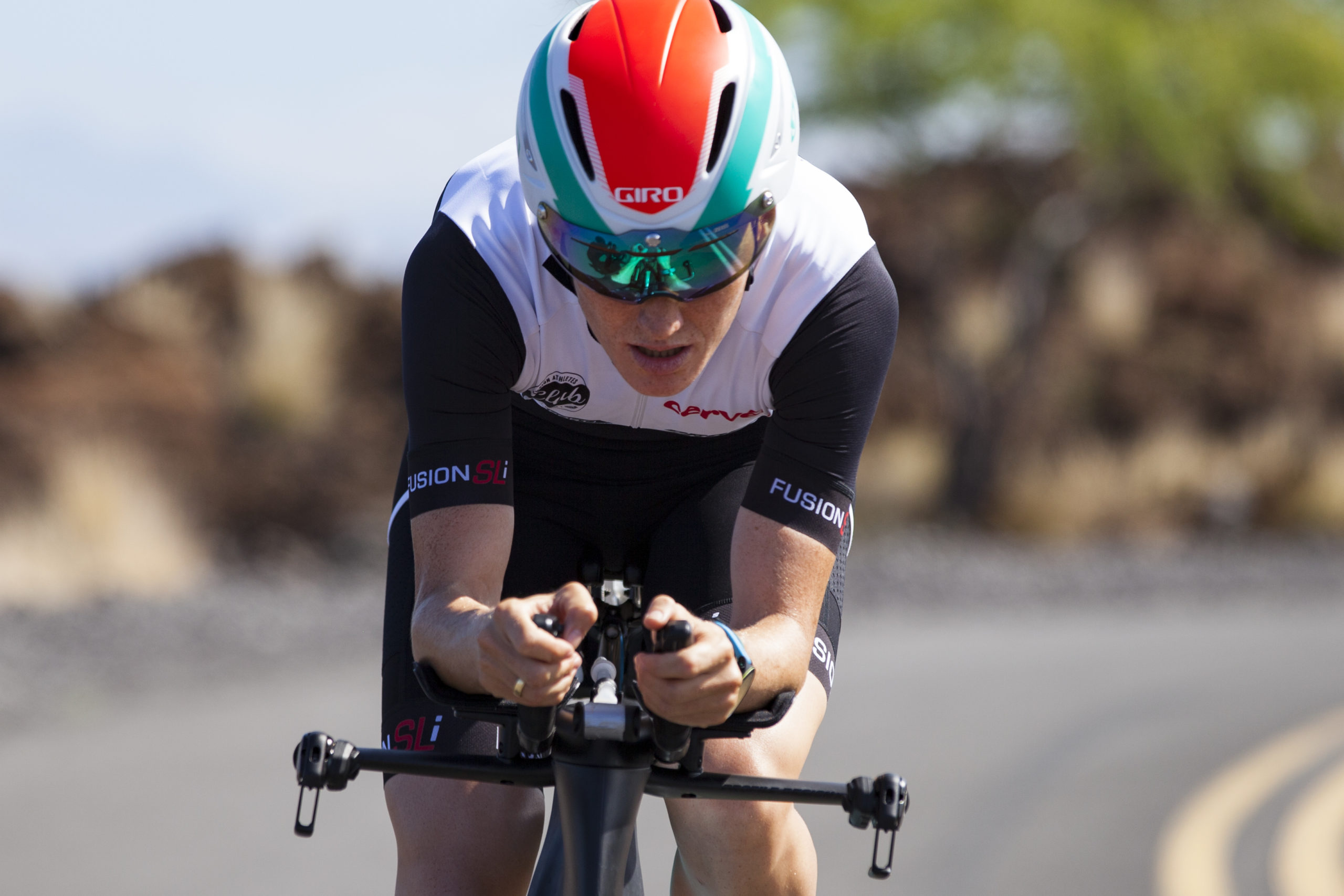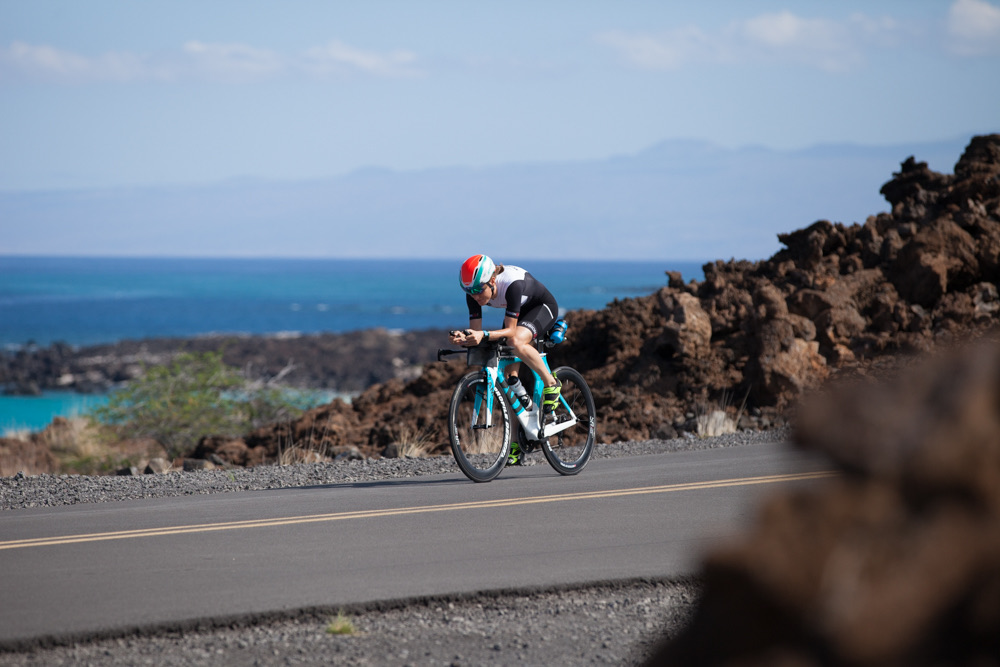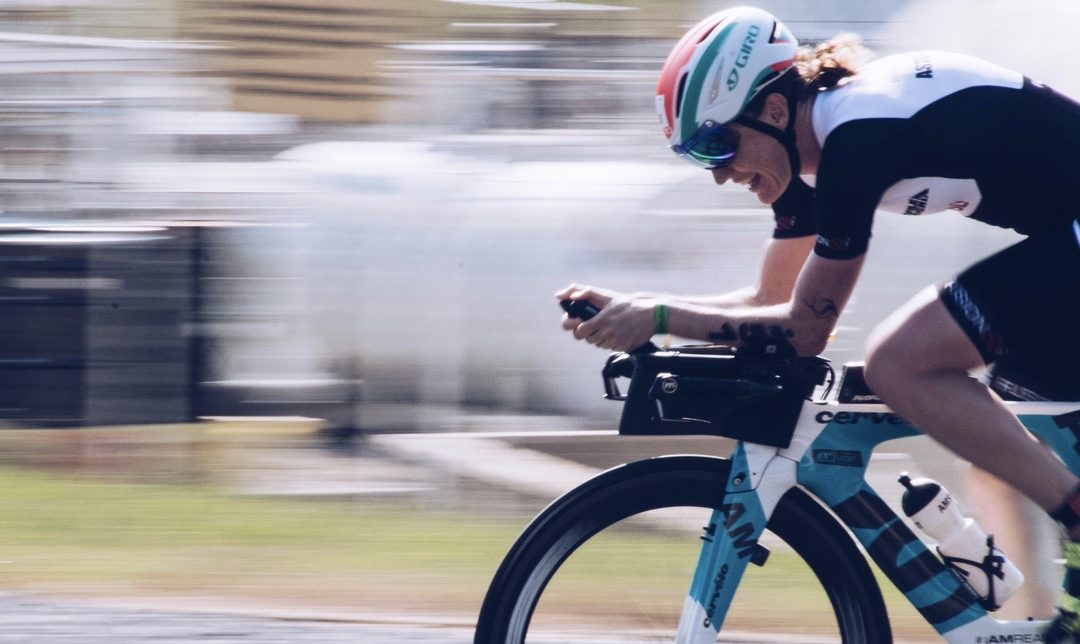
The Überbiker Blog – Chapter 2 – Challenge Daytona
The Überbiker Blog – Chapter 2 – Challenge Daytona
Here is my first real post on the Überbiker blog and actually I wanted to start with some basics of training theory, so that you can achieve the fastest bike split in 2021 that you have ever ridden and afterwards smile with joy at the finish line.
But now, 4 weeks after Challenge Daytona, I’m still talking to so many of you about this race that I can’t help but write about it. What an awesome race that was!
It’s been a long time since I’ve been so hooked on a race. Sure Kona was missing this year and the atmosphere there is hard to beat. But this race in Daytona, this fight at the absolute limit, that was the essence of our sport. That was adrenaline. That was goose bumps. That for me is the reason why I do triathlon.
I am often asked what I think about the race, why there were so many cramp dropouts and how to explain the high level of density in the race. I like to share with you my thoughts and consider what can be learned from the race. It doesn’t matter if you are an age grouper or a pro, you can always learn something and learning makes you successful. So let’s dive into a surprisingly exciting bike split.
I don’t intend to write another one of those mass-produced reports about wattage. Yes, the 4.8 watts/kg from Gusatv Iden over the whole course is pretty impressive. I take my tip of the hat to him as well. But you can’t learn anything for yourself from this. Except maybe the insight that the guys and gals are probably a bit fitter than most of us. So, let’s see what message we can take from this race for our next races.
The Course
Something that surprises me the most, even among professional triathletes, is that they often start with a shockingly poor knowledge of the course. The same is true for age groupers who have set their sights on something. When I am with professionals at the course, I always keep it like the cycling pros. The course is explored in detail and the athletes are briefed. I have to know everything. How is the asphalt, where are descents, curves, where are potholes or gravel and where do I have to choose my line differently? Even small advantages I have to take, for example, I have to make sure that I ride where the asphalt is a little more worn by the car tires, because there the rolling resistance is lower and less dirt brings the risk of a puncture. Well, all this info was available to everyone at the Speedway this time due to the training sessions the athletes did there, and because of the course, it was nowhere near as relevant as at other courses. Nice and Hawai’i certainly require completely different preparation. And yet the course dictates the training content exactly in the months leading up to the race, for the following reasons:
The difficulties at Daytona certainly are more in the high level of focus that this course demands, the absolute focus on aerodynamics and the fact that the tarmac also radiates heat and the temperatures can thus become a relevant factor. That may sound abstract at first, so what exactly do I mean by focus, aerodynamics and temperatures?
“Something that surprises me the most, even among professional triathletes, is that they often start with a shockingly poor knowledge of the course. “
Chris Decker

Ability to focus
There are various aspects to consider here, as it was already to be expected in advance that this race would be raced extremely hard. Due to the fast course, Challenge Daytona is exactly a mixture of Olympic and middle distance racing and therefore the short distance athletes should set the tone there, especially after the swim.
Power zones
So you will be racing in a power range that is not far from the anaerobic threshold (there will certainly be a blog on the topic of “threshold” or training zones). However, this range is extremely dangerous because metabolic processes cannot be sustained at this high level above this point. This means I can’t go too fast and have to focus on my power output. For professionals and ambitious age groupers on the track, this means that the given wattage is calculated beforehand based on the race duration and the possible carbohydrate intake at this power output. The goal must be to reach T2 with carbohydrate stores sufficiently filled for the run. Now, on this simple course, a wattage value or a narrow range is given as a target and the goal is to ride it almost like in ERG mode on the roller. There are exceptions for overtaking moves, because here I have to increase the power in the short term and tactical concerns, where I ride for example in the group on a position to save energy and do not want to do any lead work. I’ll explain why this is so relevant in a moment in the aerodynamics section. By the way, this is really very easy on this course, whereas the grandiose 70.3 World Championship course in Nice with its many climbs, false straights, descents and changing winds requires completely different guidelines.
Who now says, that is not difficult at all, should think about Alistair Brownlee. I claim he lost the race because he either did not consistently implement this task on the bike or did not define it exactly in advance.
Choosing the perfect line
In addition, the monotonous course requires an enormous ability to concentrate on the perfect line. Even late in the course of the bike split, this line still has to be hit. I must not drift inward into the pylon, otherwise I risk a fall, but I must also not ride too far to the outside, otherwise I drive too much distance and thus give away performance. To make this clear with a image that everyone knows. When I run on a 400m track, the innermost lane is 7.037m shorter than the second innermost lane. There is only 1,22m lane width in between. That is 1.75%. In top athletes, even smaller values make the difference between victory and defeat.
Nutrition
Last but not least, I have to concentrate on my nutrition strategy so that the previously calculated carbohydrates can actually be consumed. So I have to provide nutrition in a defined rythm and also keep it consequently.
This also sounds easy, but here, too, a top finish was given away. The aesthetically most impressive cyclist, Magnus Ditlev, with the fastest bike split of the day, certainly lost out on a top 10 place due to the nutrition. However, I am sure that he has learned from this at his young age. As far as aerodynamics are concerned, however, quite a lot can learn from him.
So, as an athlete at Challenge Daytona or other races on speedways, I have to try to keep my power output as constant as possible within a defined range, drive an ideal line and stick to my nutrition strategy. Just how difficult the task of doing this is something I’m sure everyone has noticed in training sessions where you arrived home already shivering. At least I had to be rescued by one or the other gas station where I got some Coke and Snickers. And that’s exactly what we need to learn for the important races. Fuel as much as we need to sustain the effort and calculate this in advance.

Aerodynamics
Since the course has no relevant difficulties in the form of climbs, descents or crosswind passages in which the position can or must be changed and at the same time a minimum distance of 20m to the rear wheel of the rider in front must be ensured, both the aerodynamics of the bike and that of the rider are the crucial factor.
At 50km/h, 90% of the power required to overcome air resistance is needed. Lionel Sanders – I’m a fan of him – rode at just over 48km/h. So we can take these values as given. So the most important task is to reduce the air resistance at the components bike and rider.
Bike
I’ll get to handlebar adjustments, etc., when we talk about the rider’s position. If I want to achieve something outstanding on a speedway, then I can already do some tuning on the bike.
The frame is certainly not interchangeable with most athletes and is only available once. But here, too, I can make sure that – if still routed externally – the cables are neatly guided and no extra attached cases disturb. The bottle cages should be aerodynamic in the frame triangle. Flat bottles have proven themselves here. It should be noted, however, that these can be refilled poorly. Therefore, I like to use this bottle as a gel bottle. Behind the saddle mounted bottle holders should be mounted as flat as possible. So are to grip the bottle requires a little practice, but the drag behind the saddle is significantly lower. Who still has no integrated hydration system, this can be retrofitted. Manufacturers such as Profil Design offers solutions that optimize the handlebars and hydration system aerodynamically and hide externally routed cables. Certainly a price-performance tip for older bikes.
The most popular for “tuning” are certainly the rims. Here, weight hardly plays a role, which is why a disc is recommended at the back and a 90mm rim at the front, depending on wind conditions. With the tires, it is important to ensure that the tire width is in no case more than 5mm wider than the rim to avoid aerodynamic disadvantages. This is a factor that cannot be valued highly enough. In the case of the Challenge Daytona and the good asphalt, I would also advise pure racing tires, where rolling resistance is optimized over puncture protection.
For the high-end tuners, there are also a few little things to optimize in the area of the gears. Ideally, on such an easy course, a 1×12 speed shifting system and the gear ratio should be selected so that the chain runs as straight as possible in the permanently used gear. Also the shifting options should be in the aero grips, so that the position does not have to be changed in the headwind. Furthermore, aerodynamically optimized pedals are an option. Here is clearly Speedplay the fastest system, if my wattage measurement takes place in the crank arms.
Rider
This is where the greatest potential for aerodynamic advantage can be found, and I’ve mentioned it before, Magnus Ditlev was so perfect and stable on the bike that it was a pleasure to watch. This was time trialing in perfection. This was aesthetics. A perfect symbiosis of rider and bike.
And that’s what it’s all about. It has to be a perfect symbiosis of rider and bike. That’s why I can’t write here, sit on the bike this way or that way and then you’ll sit perfectly. The perfect symbiosis is different for every rider.
So the task is to sit on the bike in such a way that I am as aerodynamic as possible AND can hold this position over the race distance. There were several failures with cramps at Challenge Daytona here, and that’s a clear indication that the position was too aggressive aerodynamically, or the holding muscles were not persistent and powerful enough.
So the first learning here is that aerodynamics also includes flexibility, stability and strength. Factors that are often neglected in the age group because of the compromises between work, family and training. It is worthwhile to invest here, even if you have to cut back on endurance training.
In an unchanged aerodynamic position, which is essential at Challenge Daytona, the exact same muscles are recruited to generate power. On other courses, where sometimes I ride in a base bar or even in a climb, I can relieve and recover. On a speedway, this is impossible in the fight for the top. And even though I personally found the track deadly boring, physically it was one of the most brutal I’ve ever seen for exactly that reason.
So I have to do strength and stability training for the posture work, stretching and yoga for flexibility, and race simulations for the specific training. I can’t start a race at a speedway without doing consistent time trial training. Especially in the current pre-season, as is the case in Europe and North America right now, this training is worth doing in order to be even faster when the races are coming up.
When the position is found, which I can therefore ride aerodynamically so that I can hold it, the further optimization starts and that is helmet and one-piece suit. These should be adapted to the body position. Basically, it helps to put the head down and forward, but this also makes the muscular holding work more demanding. Here, too, the appropriate training is recommended so that the helmet can fully exploit its advantages. Ideally, a suit should be tailor-made and not bought off the rack, since every wrinkle is a disadvantage. Meanwhile, there are good suppliers here at reasonable prices.
As I said, Ditlev was super nice to look at here and in the women’s Lisa Norden was very well positioned. For marketing reasons, the short outfits of Holly Lawrence are great and aesthetically pleasing to look at, but aerodynamically they are clearly at a disadvantage to the longer sleeves and legs of the TriSuits, as these turbulence the air less than bare skin.
Speaking of bare skin. Dear men, shaved legs and arms also make a difference, are also visually very popular with some women and better to massage. Not to mention the better healing in case of crashes. So take the shaver to hand. By the way, this doesn’t just apply to races like Challenge Daytona.

Temperature management
Anyone going to Hawai’i thinks a lot in advance about how to deal with the heat on this volcanic island. But Daytona? Here, too, you have to consider what can often be observed on race courses, especially those that are surrounded by spectator stands like a speedway.
The tarmac, with its dark color alone, is able to absorb the sun’s radiant energy well, which means it heats up and thus radiates heat again. A physically completely normal phenomenon that every body makes from 0.1 degrees Kelvin. However, in connection with the tribunes, which keep the cooling wind away from the athletes or reduce it, the temperature becomes relevant.
If I have solar radiation from above affecting the athlete and the heat radiation emitted from the tarmac, the athlete’s body is also further exposed to heat. Heat stress, however, is already sufficiently present during athletic exertion because the body has a very poor efficiency. Only about a quarter of the energy used is converted into power; the rest is released as waste heat, which in turn must be emitted so that the body does not overheat. Add to this the heat radiation from the tarmac and a reduced frontal area on which cooling wind can act, as well as a helmet that may be aerodynamically optimal but is not optimally ventilated, and the body is burdened with additional heat stress.
The body now has four ways to regulate its core temperature, which the athlete should support as efficiently as possible, because core temperatures that rise too much have a negative effect on performance.
The body can release heat via radiation as well. However, the warmer the ambient temperature, the worse this works.
Where the body is in contact with a solid object, it can also release heat via conduction. An example that I am sure many have seen is when the athletes at the IRONMAN in Hawaii pack ice under their clothes to cool themselves down. The main effect here is the heat conduction. It should be noted that the cooling is most efficient on the palms of the hands, when the cold melt water can flow over the arteries at the wrist. Ice under the cap or under the helmet is much less efficient and carries certain risks.
Furthermore, heat is dissipated via convection. Due to the improved blood circulation on the surface of the skin, the air on it is heated and slides upwards. As a result, cooler air follows and the process starts all over again.
However, the most efficient factor is evaporation. Which is mainly made possible by sweating when the humidity is not too high (often a factor in the humid air of Kona). For me to evaporate as efficiently as possible, a trisuit helps to distribute sweat evenly, increasing the surface area that is covered. This allows more liquid to evaporate and more heat to be extracted from the body.
As important as this process is, the risk is great, especially at the high intensities of a Challenge Daytona. Due to the high intensity, the gastrointestinal tract is less well supplied with blood and the absorption capacity of fluids and nutrients is limited. At the same time, the temperature is greatly increased due to the relatively high intensity and must be balanced. With a high sweat rate, a loss of fluids and electrolytes occurs here. Both things that are performance reducing.
So before the race I have to determine my sweat rate to be sure to take in enough fluid during the race (this also has to be trained at the appropriate intensity), and I also have to compensate for the electrolyte loss. In order to keep this as low as possible, it makes sense to train under heat beforehand, since the body first reacts to a change in climate with an increased sweat rate and only then reduces the electrolytes contained therein a little.
Conclusion
If you want to be fast, you have to know the course and even a course that seems “boring” at first glance has its pitfalls. Many athletes choose their races according to a race course that suits them or matches their strengths. But only a few optimize their training and their race consequently.
Maybe a good opportunity to do so. 2021 is still young.
Chain on the right,
Your Chris

